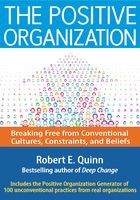
Bilingual Leadership
At the end of our interview, Alberto reflected on his learning journey. He told us that, for most of his career, he was tied to the kinds of assumptions listed in Table 2.1. He said he was particularly tied to the notion that he needed to be “the expert.” He needed to have all the answers. This assumption, more than any other, accounted for his failure. He said, “If you are an imperial CEO, or if you think too much of yourself, then it doesn’t work.”
Alberto then made a final point. It was seemingly insignificant and would be easy to ignore. It turns out to be quite important. Alberto told us that he does not always speak to others the way he was speaking to us. Many of the people he deals with are embedded in the conventional mental model. He has to take that into account and adjust how he communicates. He can do it because he once was where they are now. The once cynical Alberto can still speak the language of control and constraint, but he can also provide the kind of direction that empowers people and causes the organization to grow. He speaks two languages.
The process of becoming a bilingual leader is important, and the notion of learning another language is worthy of reflection. I think of a young man named James who now speaks five languages. He told me his first experience with a second language was in the seventh grade. He studied Spanish for four years. When he graduated from high school, he planned to go on a study abroad to South America, where he would put his Spanish-language skills into real-world practice. As fate would have it, he was sent to Brazil. He tells of his arrival in the São Paolo airport:
“Walking around the airport I remember that every sign, every announcement, and every person was using Portuguese. I couldn’t understand anything. Even when I found someone who spoke English, it was with such a heavy accent that I was lost. It was a strange experience. I was both frustrated and fascinated at the same time. I wondered how I was ever going to learn what I needed to learn, and in the short term, how I was going to find my way through the airport and to my new home.
“Nine months later, when I finished my exchange program and was returning home, I remember going back to the São Paolo airport. I saw it with completely different eyes. I could understand everything around me without even thinking about it. It all made sense. It was this amazing transformation that you can’t imagine unless you’ve experienced it.”
When James arrived at the airport in São Paolo, it was like Alberto arriving in the office of the CEO. There was much that Alberto could not understand. Like James, Alberto underwent a learning journey and acquired new ways to feel, think, see, and act. What he acquired on his journey was a more comprehensive, positive map. If we return to Figure 1.1, we can see how he became a bilingual leader. While he was naturally strong in the bottom half of Figure 1.1, he acquired an understanding and an appreciation for many of the characteristics in the top half. Like James returning to the airport with increased ability to function, Alberto also had increased ability to function.